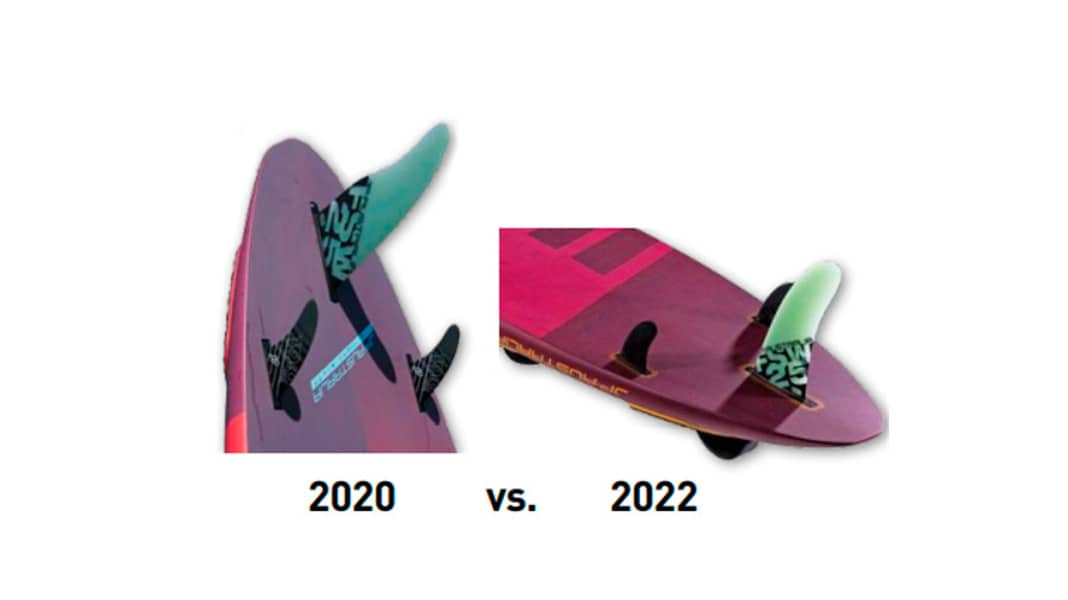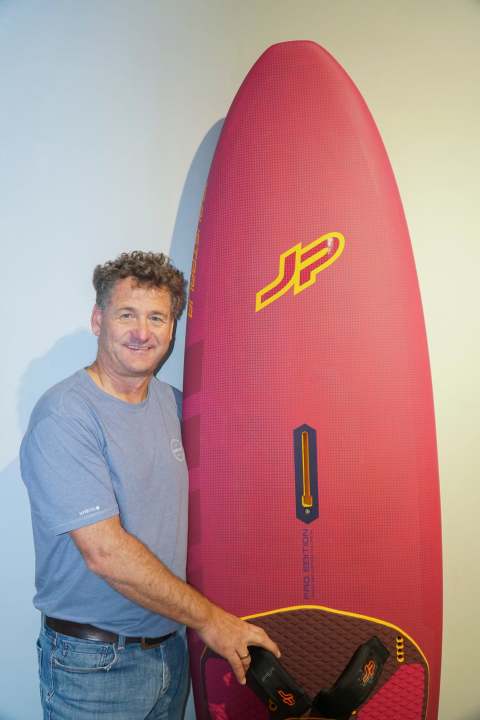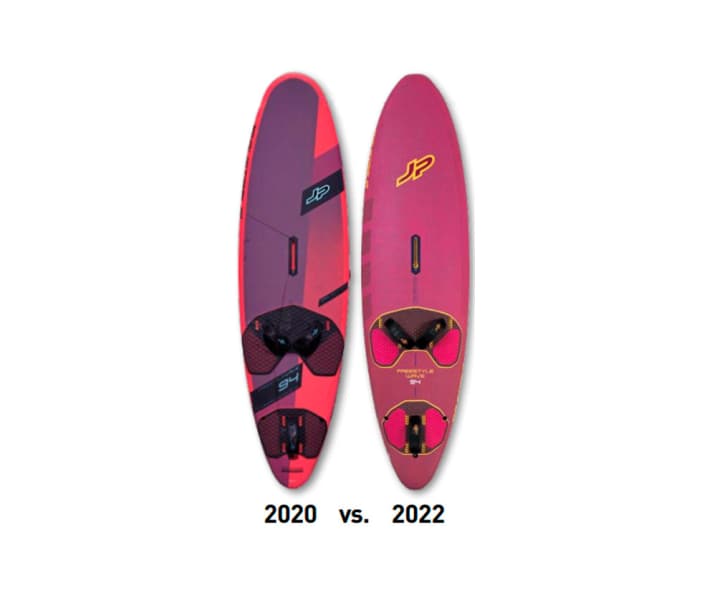Products: JP Freestyle Wave 2022

Do you remember your first "freestyle wave"?
The Freestyle Wave line has been with JP from the very beginning, since we started the brand in 2000.
How have the characteristics of the boards developed since then?
We were heavily involved in defining the characteristics of this board group, also because we delivered a concept with a good balance between bump & jump and a certain wave suitability right from the start. In some countries, the board group has been named "Freestyle Wave" after our boards.

In the last surf tests we had the feeling that there was a lot of wave ability in it and perhaps not quite as much freestyle.
When the first models were developed, freestyle stood for classic freestyle moves such as 360s. The boards were and are fully suitable for this. Now freestyle is in a league of its own. However, the target group for these boards rarely does the latest mega moves, but continues to do classic freestyle tricks and the boards work wonderfully for this. During the test phase, we also kept trying out which direction we should improve in. But if you get too wavy, you slip into the wave segment and if you get too freeride, it's almost an allride. People like to surf comfortably, they want a board that holds easily, they want to surf in the swell or ride a sideshore wave. These are boards for Lake Garda in northerly winds, for Egypt or the North Sea. An 80-kilo rider with a 93-litre board covers a huge range of use with sails of four to six square metres. That's not possible on a waveboard.
What type of rider do you have in your sights?
The classic recreational surfer who simply wants to enjoy surfing in more wind, but also wants to play a little with moderate waves.
How does the Freestyle Wave differ from the Magic Wave?
A Freeystyle Wave is easier to ride in the lower wind range and planes better - this is also due to the fin tuning.
How do they differ in terms of rockers and other characteristics?
In the past, everyone only talked about the rocker - the tail rocker, the last part. Now the centre line is considered and developed completely separately from the rail line. That's why you can put the bar in the middle of a Magic Wave and you won't find much rocker in the centre line. It all takes place in the rail line. Due to the different V-shape and the use of concaves, I have a completely different curve at the edge than in the centre. That's why wave shapes can now plane so well and become so fast. Because the concaves between the foot straps give me a flat centre rocker line. But with a concave and V, I get a crazy curve in the rocker line.

And with the Freestyle Wave?
Exactly the same. If you put a batten in the centre, there won't be much difference to the Magic Wave because both end flat towards the tail. The difference is at the edge. With wave boards, I have a very radical transition in the planing surface from the "V" at the front in the area of the mast track to the concave in the area between the straps and back to the "V" at the very back. With Freestyle Wave it is a bit more even and there is no concave under the loops. I also play with significantly more "V" than with previous generations at the front so that the board rides comfortably, then a reduced "V" between the straps and a little more "V" again at the back. This also gives me a very curvy rail shape. This allows the board to set freely at the front, but has a free planing position due to the flat centre section and the changing V creates a "rocker" in the rail line. The Magic Wave has a concave between the foot straps, the Freestyle Wave does not, but a continuous "V" that changes from front to back. This makes the Freestyle Wave a little less radical.

What are the differences between Freestyle Wave 2021 and 2022?
We wanted to keep the good balance and tried to improve the board as a whole and not just in one specific direction. That was a difficult exercise and we made prototypes for a few years and never got anywhere - until last year. You can see at first glance that the nose has become slimmer. The volume is better centred and with a little less volume at the front it feels more direct. At two metres from the stern, however, the outline is already very similar so that you have enough space around the mast base to turn and don't have problems planing. In addition, we have built in significantly more "V" in the front area (Red. approximately under the mast track), so that the board touches down much softer in the chop and surfs more forgivingly. As a result, the edge at the front is further away from the water when initiating the jibe - with more curve in the front rail - and the board is super easy to turn.
"The easiest exercise is to improve manoeuvrability or performance. The difficult thing is to maintain the opposite side."
How much change are we talking about?
In the area from the mast base to 1.60 metres from the stern, the shape has twice as much "V" as before. The dimensions, i.e. width and stern width, are very similar so as not to change the overall characteristics. The subtleties lie in the "V" and the railshape. We have made the rail a little thinner at the rear for a little more grip and easier edging. Because the board no longer needed a lot of rocker in the centre line, it now has a freer planing position and sits a little higher in the water. It rides faster and more comfortably. We were able to improve the manoeuvring characteristics without losing performance. The easiest exercise is to improve manoeuvrability or performance. The difficult thing is to maintain the opposite side. These shaping features have made it better in the waves, but it has also gained performance. Compared to its predecessor, the board no longer has any rocker in the centre line and glides more easily and becomes faster.

What has happened with the Finns?
The Pro edition - now back in the programme with the Kevlar top laminate due to popular demand - comes with three fins, the ES design with one fin. The centre fin has a completely new shape in both versions - with a more even "rake" (ed.: inclination of the leading edge), with more surface area at the tip and is therefore easier to ride and supports planing. The stronger rake at the tip improves the manoeuvring characteristics. It is easier to generate fin pressure - when setting off and during manoeuvres.
How big is the difference between a single fin and a thruster?
The single fin always has two centimetres more than the same board with a thruster. The thruster has less lift, the board is easier to control and turns better. However, if I'm the "bump & jump" type, I also have a lot of fun with the larger single fin and find it even easier to plane, and jibes are also easier to glide through.
What about the boxes?
All sizes have a built-in foil box. Many customers now sail the Freestyle Wave with a foil in light winds and it works wonderfully. Our Glide Wind Foil with the 1300 wing fits very well, you don't need more than a 5.5 metre sail - you can easily fly at ten knots. This extends the wide range of use even further.
Info: www.jp-australia.com

